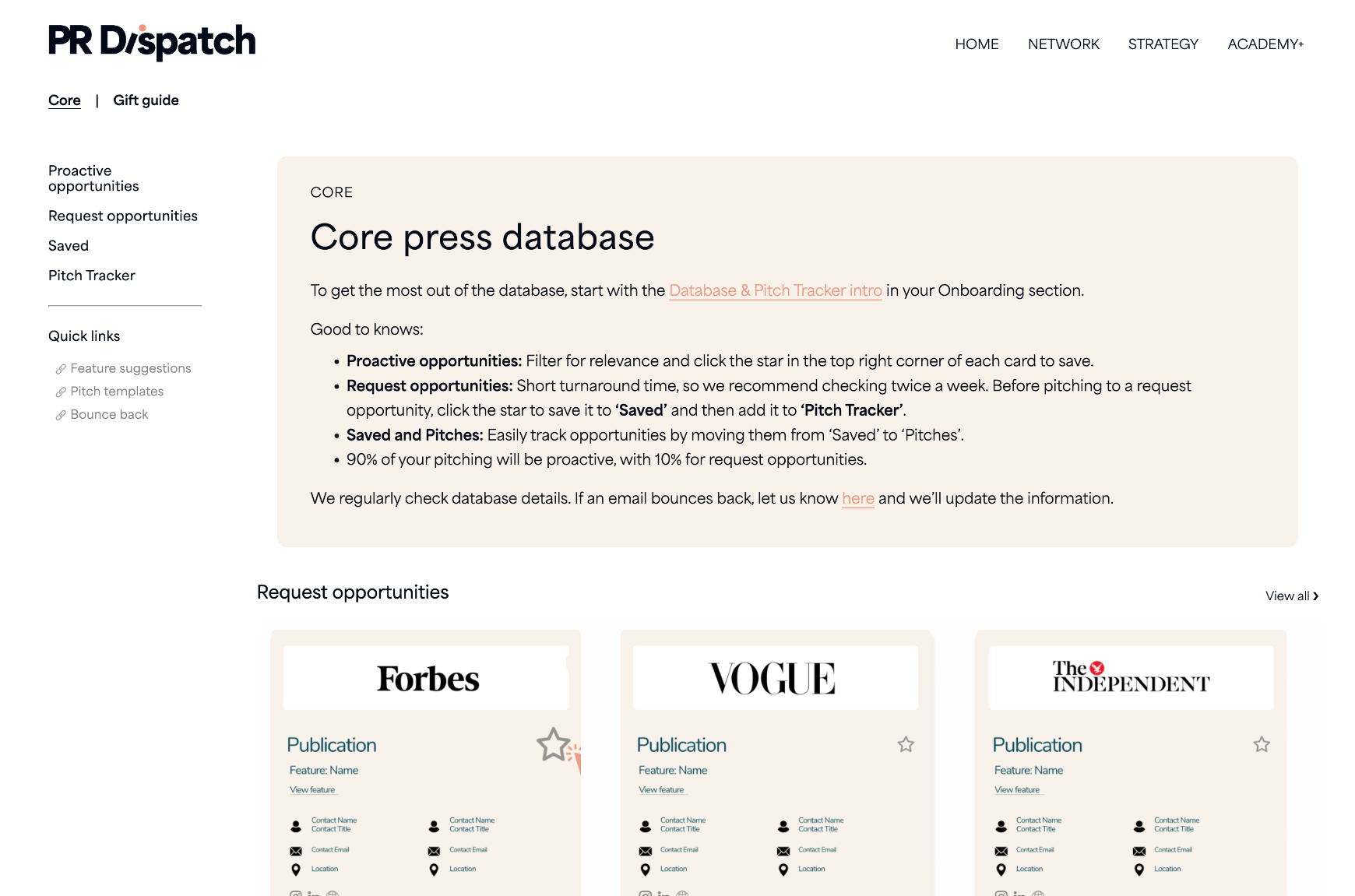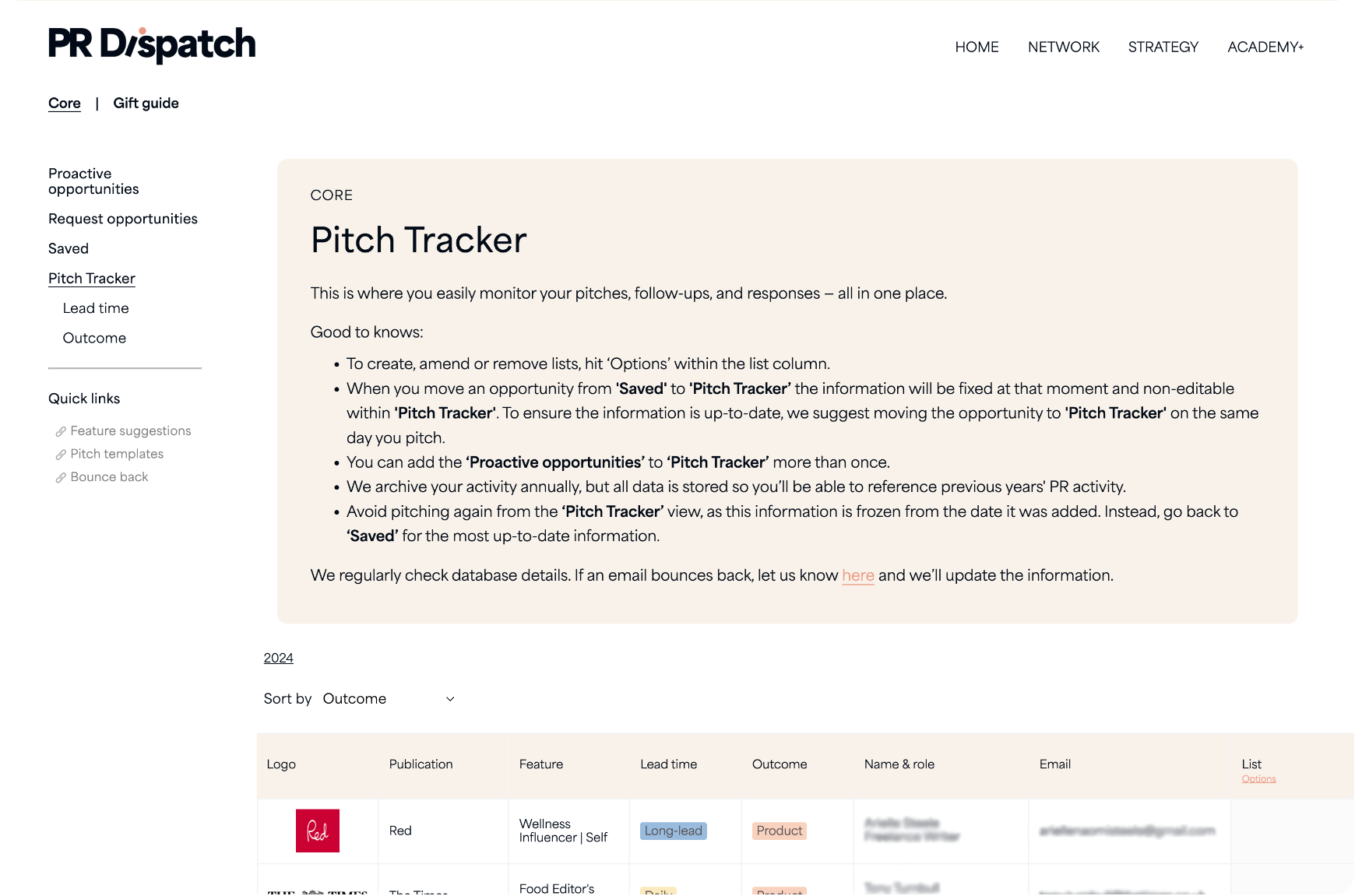The ultimate PR plan example for eCommerce brands
Getting press coverage is one of the most powerful ways eCommerce brands can build trust, increase visibility, and drive sales—without relying on paid ads. But here’s the truth: sending out random PR pitches and hoping for the best isn’t a strategy. If you want consistent, high-impact coverage that leads to real results, you need a focused PR plan.
This blog outlines the exact framework successful brands use to secure features in top-tier magazines, digital publications, and even TV. Whether you’re new to PR or looking to improve your results, this is your step-by-step guide.
1. Set clear PR goals
The most effective PR strategies start with clarity. Before sending out a single email, brands need to define what they’re actually trying to achieve.
PR goals should be specific and measurable. Do you want to:
Drive more traffic to your website?
Boost brand awareness ahead of a product launch?
Secure expert quotes to build authority?
Be featured in seasonal gift guides to increase sales?
For example, a skincare brand might set a goal to appear in five major beauty publications over the next nine months. A homeware brand might target coverage in Christmas gift guides to support Q4 sales.
Defining the goal helps direct the entire strategy and makes it easier to measure success.
2. Identify the right media outlets
Not all press is created equal. A feature in a high-profile magazine might look impressive, but if the audience isn’t aligned with your customers, the impact will be limited.
To get started, think about where your ideal customer spends time.
What magazines, blogs, or podcasts do they follow?
For fashion and beauty brands, outlets like Stylist, Vogue, or Who What Wear may be ideal. For interiors, House Beautiful, The Spruce, or Apartment Therapy might be more relevant.
Don’t overlook niche or specialist media either—these can often deliver more engaged traffic than mainstream titles.
Once the right outlets are identified, start building a list of relevant journalists. Look at article bylines, search for authors on social media, or use tools like PR Dispatch’s press database, which includes over 1,000 UK media contacts updated weekly.
3. Craft a story journalists want to tell
This is one of the most important—and commonly missed—steps. Journalists aren’t looking to promote products. They’re looking for compelling stories that serve their readers.
Instead of simply announcing a product launch, brands should ask:
Why is this relevant now?
What makes this product or brand different?
What broader conversation does this tie into?
For example:
A skincare launch might be pitched with a focus on a trending ingredient or a unique problem it solves (e.g. “A moisturiser designed specifically for reactive winter skin”).
A homeware brand could tie their offering into rising energy costs by pitching a story like “How to stay warm at home without turning up the thermostat.”
Newsworthy angles, seasonal relevance, expert commentary, or data-led stories are all great ways to increase pitch success.
4. Pitch strategically and follow Up
Once the story is defined, it’s time to pitch.
Strong PR pitches are short, relevant, and easy to read. Journalists are busy—most receive hundreds of emails a day—so making your pitch clear and compelling is crucial.
A good PR pitch should include:
A concise subject line that grabs attention
A personalised intro referencing the journalist’s work or the outlet’s audience
A clear hook—why this story is relevant and timely
A call to action—offering an interview, sample, or more information
Avoid sending entire articles or lengthy press releases. Instead, focus on delivering a ready-to-use angle that aligns with the journalist’s current editorial needs.
If there’s no response, follow up after about a week with a brief and polite reminder. If there’s still no reply, it’s perfectly normal—journalists often save pitches and return to them later. A second follow-up a few months down the line can often result in coverage when the timing is right.
5. Track results and optimise the strategy
Once the PR plan is in motion, it’s important to track what’s working.
Keep a record of:
Responses from journalists
Published coverage
Website traffic or sales spikes following PR activity
The angles or outlets delivering the most traction
This information helps refine future outreach. For example, if sustainability angles consistently land coverage, or a particular journalist responds regularly, that insight can shape future pitches.
The PR Dispatch platform includes a pitch tracking tool that helps members stay on top of outreach and monitor results. Many brands have halved the time they spend on PR with this feature alone.
And when press coverage is secured—make it work even harder. Share the feature across your social channels, add it to your website, and include it in email newsletters. Third-party credibility builds trust and supports every part of your marketing strategy.
Final thoughts
Press coverage is still one of the most cost-effective ways to grow a brand. But results don’t happen by chance. With a strategic plan—clear goals, relevant media targeting, compelling stories, and strong outreach—brands can consistently secure features that drive real business growth.
At PR Dispatch, we help eCommerce brands take control of their PR. With expert training, access to a growing press database, and live calls with UK editors, we make it easier than ever to land press coverage—without the agency price tag.
Want support putting your PR plan into action? Join PR Dispatch and get everything you need to secure the coverage your brand deserves.



